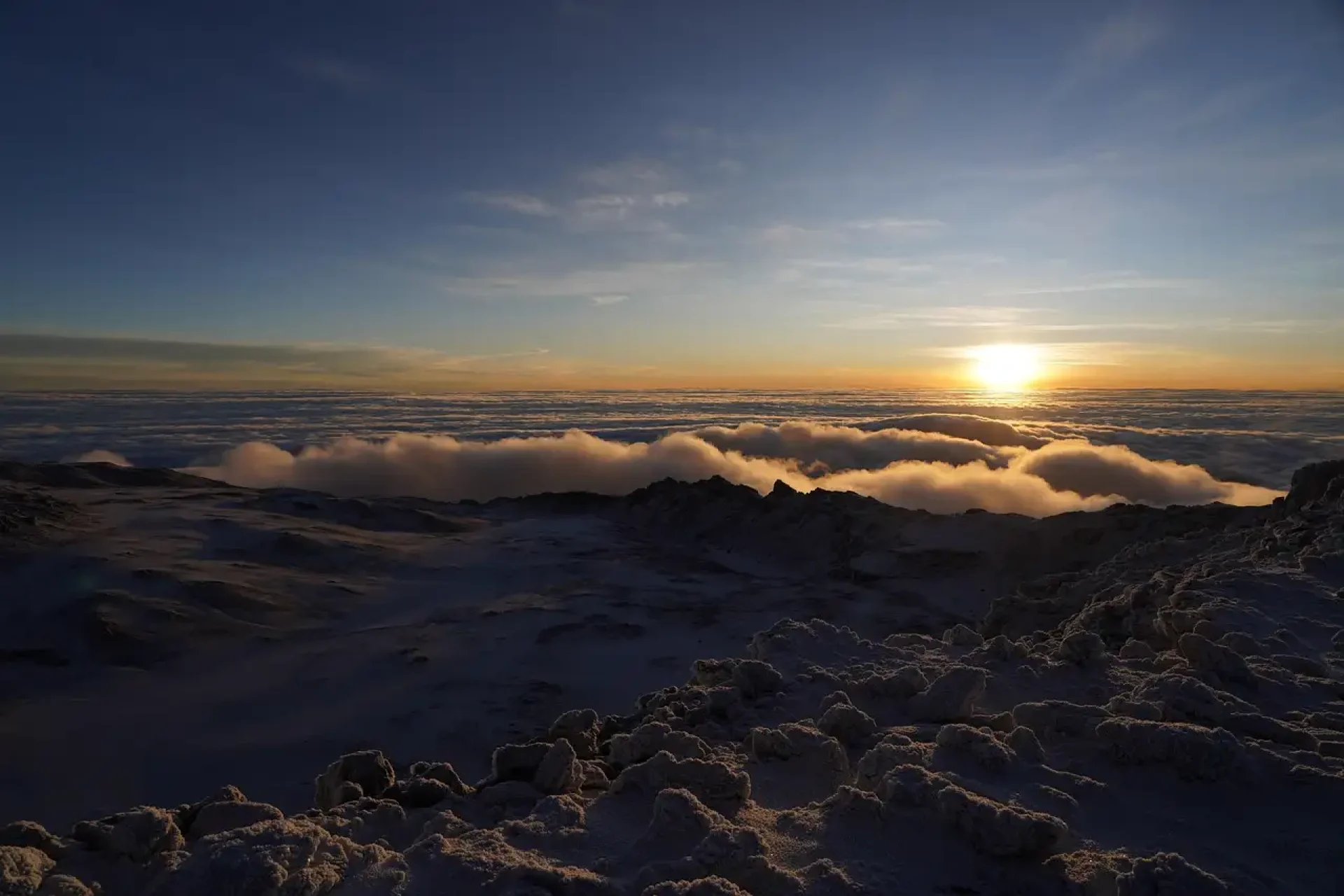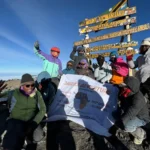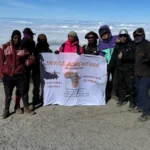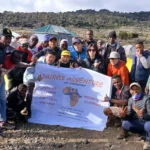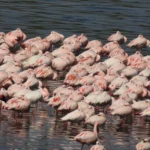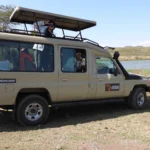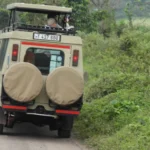LEMOSHO ROUTE KILIMANJARO
However, the beauty of the Lemosho route is that in the final stages of the route, it converges with Machame route. Thus the traffic starts rising. Yet for those who wish to have a bit of hush and stillness at the beginning of the ascent, this is a nice alternative. The Lemosho route has many of the same sights, including Lava Tower and Barranco Wall, because it shares the Machame Route for part of the climb. However, within the first few days this trail does go through a different surrounding terrain that one cannot find anywhere else on the mountain. Travelers will also have an opportunity to walk in unspoiled rain forests and climb the Shira Plateau and above the tree line to admire the breathtaking views. Owing to the fact that it is hard to access the Lemosho and it is a longer route, this trek takes one or two more days. The majority spend about seven or eight days on this route, which results in the success rate increasing rather markedly.
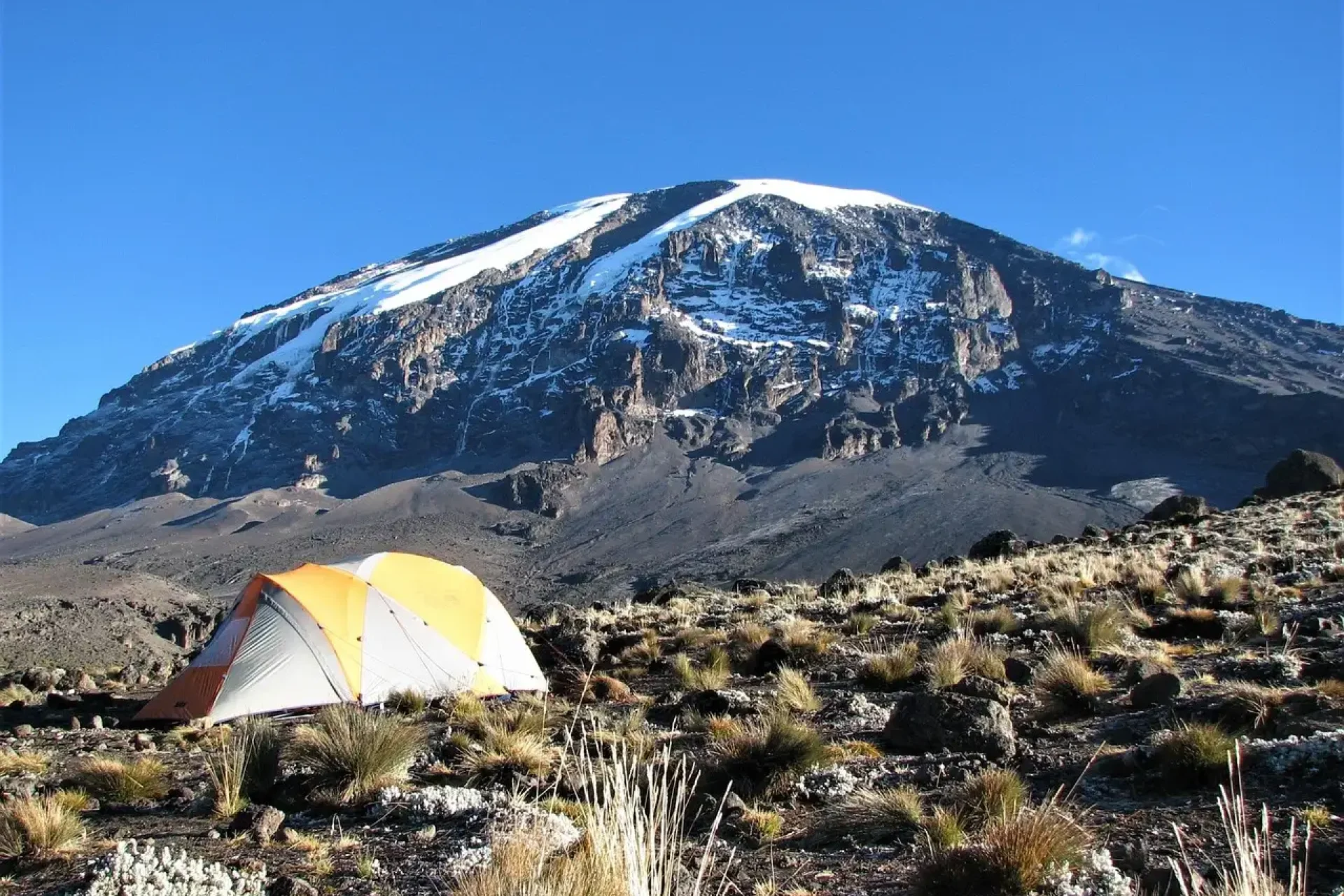
Lemosho Route
The Lemosho route is often rated as the best route for climbers looking to scale Mount Kilimanjaro. This is due to the awesome views and fantastic accommodation that the route offers. Beginning from Londorossi Gate, the route leads the hikers through a forest where there are colobus monkeys before climbing up to the Shira Plateau.
The 7-day itinerary has a provision that balances the level of difficulty and rates of success with 96.5% summit success and 94.9% success with the Crater Rim and Uhuru Peak respectively. The route is remote and there are beautiful views of Cathedral Peak and Dendrosenecio Kilimanjari among others. For its attractive views, variety of climatic zones, and reasonable altitude acclimatization, the Lemosho route is very appropriate for any climber aspiring to conquer the tallest mountain in the Continent of Africa.
Lemosho route Map
For those who wish to have a good chance of summiting the mountain, this is definitely one of the preferable options available, especially in comparison to the Machame route and the Marangu route. However, it is worth mentioning that what is known as the Lemosho route has a higher percentage of success rates it is more challenging than the “Whiskey” and the “Coca-Cola” routes.
‘Coca-Cola’ routes enlist more resources, including time, as they do include spare days. Trekking time is approximated at an extra night or two as trekkers also pitch tents. Still, in as much advantages of this route may be the same as in the other routes, this rout is gaining more popularity as it is sought by many travel enthusiasts.
Climbing Kilimanjaro gives Lemosho as 7 days or 8-day climbing option. The seven-day version shortens by one day combining days five and six from Barranco Camp to Barafu Camp without overnight at Karanga.
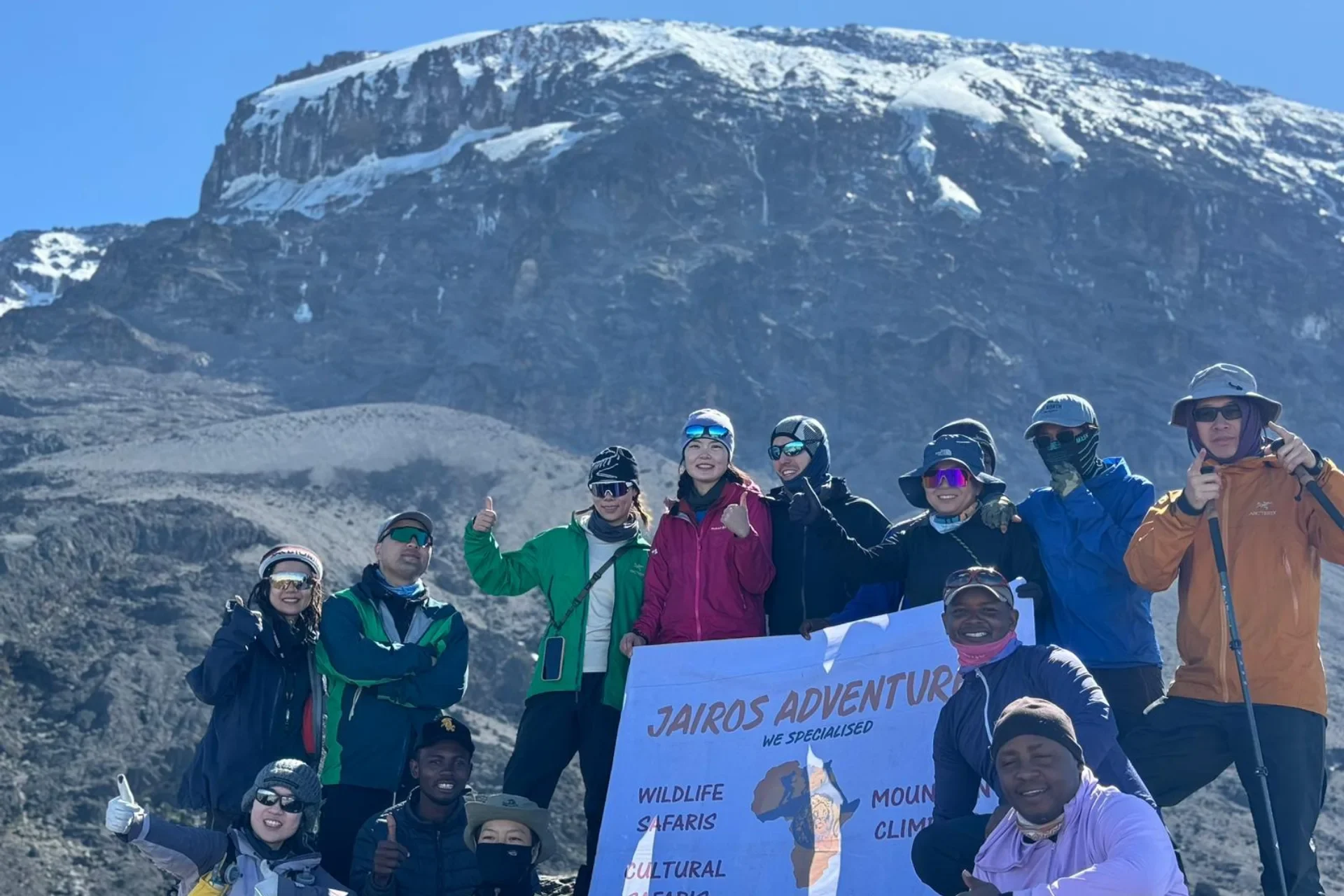
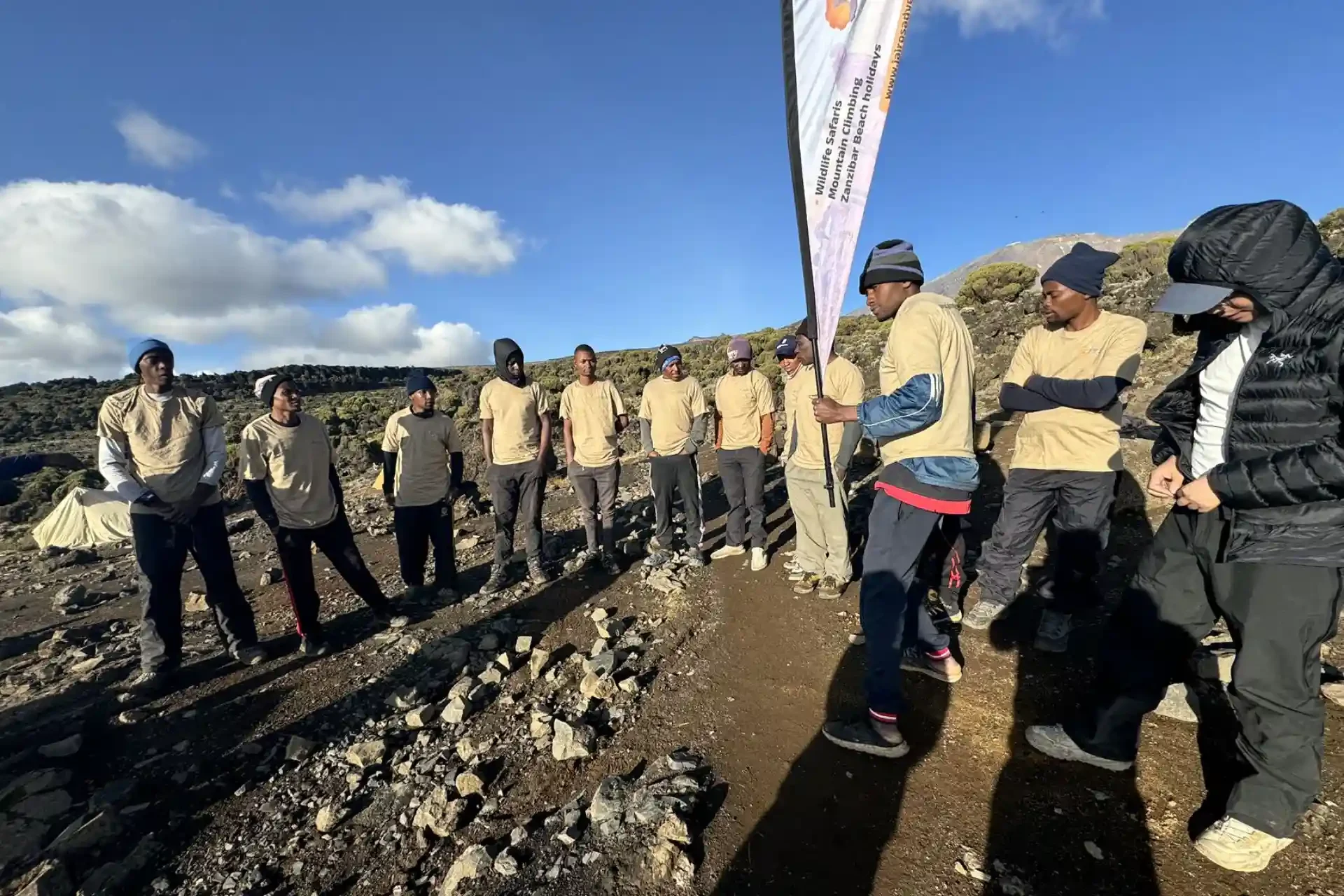
8 Days Lemosho route
The Lemosho Route has become famous and very attractive among climbers who want to try scaling Mount Kilimanjaro, thanks to its great budget for acclimatization and sightseeing. Trekkers begin their journey at the Lemosho Gate and walk through rainforests, then alpine meadows, and rocky grounds before finally reaching the summit at Uhuru Peak (5895 m or 19340 f). The itinerary normally incorporates a gradual rise to some points enabling acclimatization which greatly enhances the possibility of reaching the summit.
The route distance is about 70 km (42 miles) which is covered in eight days and has the captivating altitudes of Kibo and Mawenzi peaks, abundant wildlife, as well as special plant species like Impatiens Kilimanjaro which is found only in the region. The trek can be difficult with high altitude and unpredictable weather but the trek is purposely slow allowing enough time for the climbers to rest and recuperate. This makes it possible for hikers with average fitness covering this eastern region of Africa, to go in one of the most interesting climbs this continent has to offer.
7 Days Lemosho route
The 7-Day Lemosho Route is one of the best trekking options for Mount Kilimanjaro, as it offers an appropriate degree of acclimatization against a scenic background. Commencing from the Londorossi Gate, the climbers traverse through the dense tropical rainforests into moorlands, with interesting points being Shira Camp 1 and Moir Hut where Kibo peak stands in full view. This schedule makes it possible for the climbers to gradually get used to the increasing altitudes by splitting the climb into smaller easier hills, especially on day 2 when the climbers move from Forest Camp to Shira Camp 1, where little of the altitude is gained.
The trek proceeds with yet another important acclimatization day undertaken over the Shira Plateau before attempting Lava Tower, its associated descent towards Barranco Camp being beneficial for individuals preparing for the harsh conditions of high altitude. The last stretch to the peak commences from Barafu Camp after a night’s rest before embarking on a strenuous climb at Uhuru Peak. The 7-day Lemosho Route is also unique in that it exposes trekkers to a range of ecosystems and scenic views in addition to improving summit success frequencies on Africa’s tallest mountain.
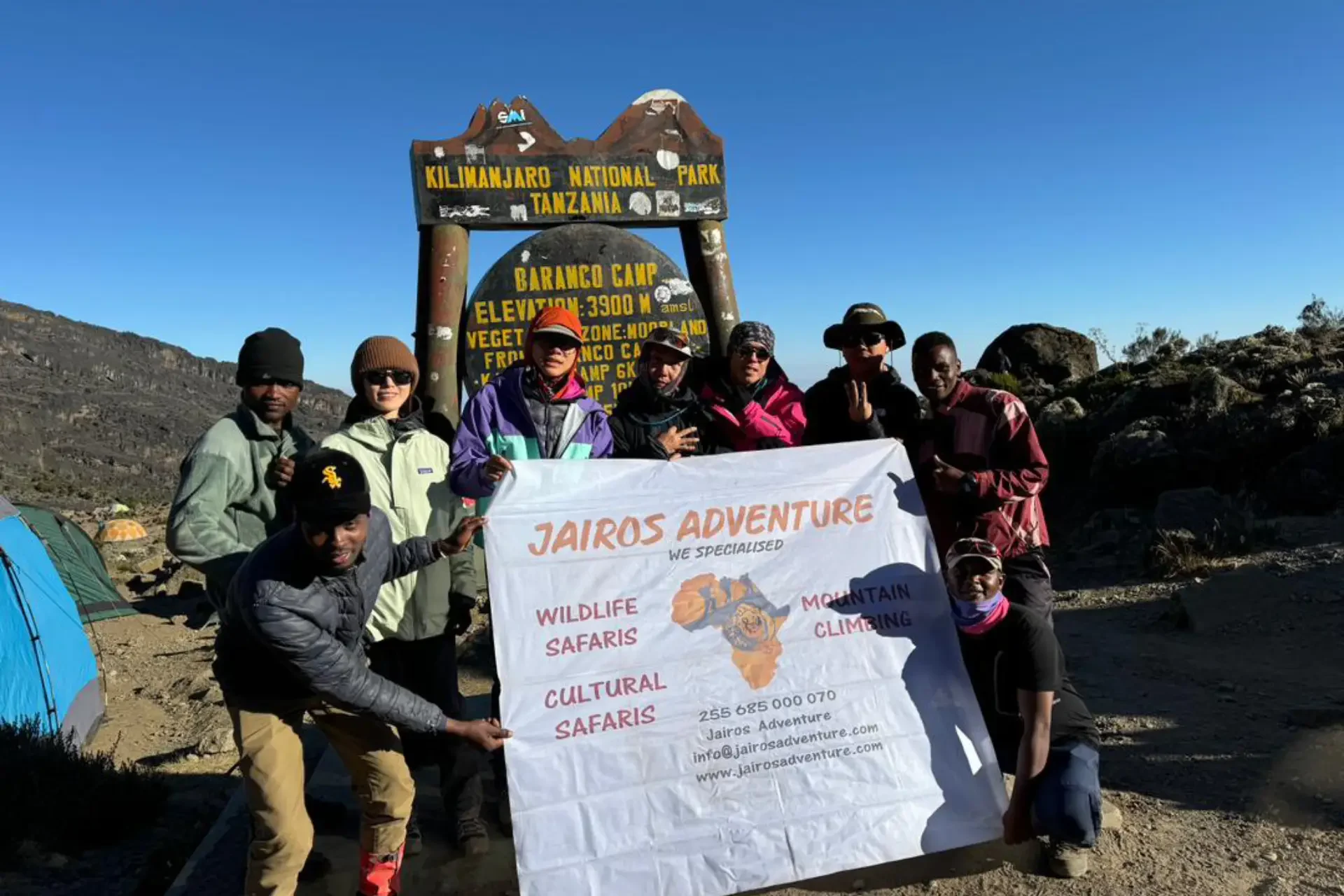
FAQ
Lemosho 7 days vs Lemosho 8 days
You might wonder which Lemosho itinerary is more suitable for your expedition: the 7-day or 8-day variation. The 7-day itinerary begins at 3,414m, jump-starting your acclimatization. This way, you can benefit from more days on the altitude, yet this rapid altitude gain might be uncomfortable for some hikers. In addition, the first two days of this itinerary are fairly easy hikes with not much altitude gain.
In contrast, the 8-day route starts at 2,100m and features a more challenging first day. However, starting lower, you’ll get to experience a more gradual acclimatization and enjoy hiking through a rainforest. Overall, both routes are highly recommended for climbers of all levels. They offer great acclimatization profiles, summit success rates of well over 90%, and rank among the most scenic routes on Kilimanjaro.
Lemosho 8 day’s vs Northern Circuit
The Lemosho 8 route is beautifully scenic and it also has a good acclimatization profile like in the case of Northern Circuit 8. However, the Northern Circuit offers views of Kilimanjaro from all four directions but it is relatively less attractive. This is because the northern aspect is less rain-fed and therefore has less and less varied flora. Also worth noting is that even though the Lemosho has a better summit success rate, it is almost within the top three most crowded routes on Kilimanjaro, the Northern Circuit is less crowded.
Considering the distance, the Northern Circuit is a more appropriate option for hikers who are in good shape and consider long treks on a daily basis as a matter of fact. Also, if you really do not wish to face the Barranco Wall, Northern Circuit has that option. Both the circuits can be undertaken with no need for any technical training nor physical preparations and are well fitting for acclimatization. The summit success rate is higher on Lemosho mostly because few hikers on this route take the long way round of the Northern Circuit and get worn out.
How many miles in the Lemosho Route
The 8-day Lemosho route itinerary spans approximately 70 km (43 miles), while the 6 and 7-day variations cover around 56 km (35 miles). This puts Lemosho somewhere in the middle, if we look at the length of other Kilimanjaro routes.
Where does the Lemosho route start?
The 8-day variation begins at Londorossi Gate (2250m), whereas the 6-7 day options commence with a vehicle drop-off at 3,414m on the Shira Plateau.
Does Lemosho go via the Barranco Wall?
Yes, the Lemosho route goes via the Barranco Wall. Yet, its appearance can be more daunting than the actual experience. Even many seniors have successfully navigated it without significant difficulty! For more information check out our guide on the Barranco Wall.
How hard is the Lemosho Route compared to other routes?
The climb is moderately challenging, but it’s well within reach for the average person in decent shape. Remarkably, it stands out as the top choice for beginners, boasting the highest success rates.
How difficult is the lemosho Route?
The Lemosho route is considered one of the easiest routes on Kilimanjaro as it’s longer itinerary allows for better acclimatization. However, hikers will still need to ascend the Barranco Wall and climb steeply on summit night. No technical climbing is required but a good level of fitness is highly recommended. You can read more on training to climb Kilimanjaro and our Kilimanjaro training program page to help you prepare accordingly.
What is the distance of the Lemosho Route and how many days does it take?
The exact trekking distance for the Lemosho Route is 71km or 43 miles. The shortest number of days required for Lemosho Route is 7 days, but by the time you have added on arrival and departure days it is 10. However, as it is a much longer approach route it is actually best done over 8 or 9 days to increase your changes of success.
The Complete Kilimanjaro Packing List
In order to be safe and comfortable throughout your Mount Kilimanjaro climb, you’ll need to bring important gear and supplies with you. We have put together a comprehensive Kilimanjaro Packing list to help you prepare for your climb. Trekking Kilimanjaro involves five main climate zones, from the warm, humid forest and lower slopes, to the bitterly cold summit zone, with glaciers, ice, and snow. You need to be prepared for all Kilimanjaro weather conditions: sunny, windy, and rainy.
We provide tents, the camp equipment, food, cooking facilities, and other shared items. You’ll have a duffel bag with all your kit, carried by the porters; and carry your own daypack during the trekking day.
Download your printable Kilimanjaro packing checklist here
Climbing Kilimanjaro Information
Mount Kilimanjaro climbing is one of the ultimate accomplishments for both first-time and experienced climbers. Kilimanjaro has a range of different climates and you need to be equipped so that you are comfortable at the different altitudes.
As you ascend, Kilimanjaro weather gradually changes and gets colder and the increasingly thinner air can bring about altitude sickness. Altitude sickness is caused by the failure of the body to adapt quickly enough to the reduced level of oxygen in the air as one gains altitude.
While climbing you may experience different symptoms of mild altitude sickness, with the most common being headaches, light-headedness, nausea, sleeplessness loss of appetite, loss of balance, and dizziness. In most casesse these ailments are controlled by taking painkillers such as Panadol or similar.
All climbers are advised to countercheck their body conditions, and should openly communicate with their Guides. Our experienced guides are all well trained in highly specialized First Responders Wilderness training and can spot acute mountain sickness. Unlike many operators, Jairos Adventure carries oxygen on all climbs and we perform daily health and pulse oximeter checks, which measure both your heart rate and the percentage of oxygen in your blood. We want to ensure and monitor your health and safety at all altitudes.
Except for the Marangu route where accommodation is in huts, you will be sleeping in tents every night, so it is important to have proper weather-rated sleeping bags and clothing.
The walking pace should be slow and steady. We recommend you take your time and walk slowly to give yourself the best chance of fully acclimatizing as well as reducing fatigue for the following days.
Minor altitude sickness on Kilimanjaro causes most climbers to experience a loss of appetite, however, it’s important to eat well and maintain your energy. Staying hydrated is essential drinking a minimum of 3 litres per day. We recommend reducing or eliminating your caffeine intake – as it has a diarrhetic effect which can cause dehydration.
Trekking high, and descending low is the best technique to help your body acclimatize. Our climbing itineraries have been prepared to follow this practice, giving you the best possible chance of success to reach the summit.
It is strongly recommended to not smoke or drink alcohol when climbing.
As always it’s best to seek a doctor’s advice before you travel and upon arrival at your briefing listen to your Guide’s advice. Many clients choose to take Diamox before attempting Kilimanjaro and report a noticeable increase in comfort and reduction of symptoms. This of course is an individual choice. You can easily purchase this medication at a local pharmacy for less than $5 for a week’s supply. We advise trying the medication before leaving for the climb to detect any possible adverse side effects. Numbing of fingers, cheeks, and toes is common.
Safety
It is absolutely vital that one stays well-fed during the climb particularly at times like this when the conditions do not make one want to eat or drink as much as they should. Because so many climbers face loss of appetite during altitudes, our head chef has devised special menu plans that are appetizing, healthy, and loaded with juices of energy necessary to get to the top. Meals, by default, have fresh fruits and vegetables every day. Fresh meat will be there at the beginning of the trek and on the southern route where it is possible; we resupply the team at Karanga Camp. As an extra treat after your summit ascent, we will be ready to have an “All Day Breakfast” when you return to Base Camp – just inform our cook how you’d like your eggs! And before you leave the mountain, you also get to sample some of the local Tanzanian cuisine such as Njegere and Machalari.
Food & drink
The entire day-by-day itinerary includes everything from hotel accommodation to meal basis. All pre-and-post climbing accommodation is in Moshi. We will have booked you a hotel in Arusha upon your arrival if you decide to go on safari before your climb so that your travel time gets shortened. Where you have a B&B basis, you could either purchase snacks or meals in the hotel, which can be paid in Tanzanian Shillings or many times in US Dollars. When you arrive at the hotel, take time to familiarize yourself with the layout and the procedures in case of fire, especially with your escape routes and fire exits.
Your meals will be taken in a separate mess tent where you will be able to sit comfortably, while you relax and chat with your teammates and enjoy the wholesome food that our cook has freshly prepared for you. Inside, you’ll be pleased to find a table (of course) and a proper, comfortable chair with arms. With a full 2 mmetersof headroom, even the tallest climbers will be able to stretch a bit and move about without hunching over. They are fully waterproof, and regularly withstand the worst weather Kilimanjaro has to offer. A toilet tent is provided with toilet paper.
We use only the very finest high-altitude mountain tents, Mountain Hardwear Trango 3, to ensure you stay warm, dry, and comfortable on your climb up Kilimanjaro. Keep in mind that these are mountain tents and are made for extreme conditions, so don’t expect to be walking around standing inside! The dry and dusty conditions we experience in Kilimanjaro create havoc on the zips and easily jam them. Our guides are armed with WD-40 so just ask them for assistance rather than trying to force the zip.
Accommodation
The entire day-by-day itinerary includes everything from hotel accommodation to meal basis. All pre-and-post climbing accommodation is in Moshi. We will have booked you a hotel in Arusha upon your arrival if you decide to go on safari before your climb so that your travel time gets shortened. Where you have a B&B basis, you could either purchase snacks or meals in the hotel, which can be paid in Tanzanian Shillings or many times in US Dollars. When you arrive at the hotel, take time to familiarize yourself with the layout and the procedures in case of fire, especially with your escape routes and fire exits.
Transport
Kilimanjaro National Park operates a strict limit of 20kg per porter in respect of carrying your main equipment bag. This limit also applies to your sleeping bag, even if rented from us. This is more than enough for your use while in the mountain. Your bag will be weighed before you leave the hotel to start the climb and if it is in excess you will have to take things out and leave them at the hotel. Additional porters can easily be hired but they cost $25 per day.
Luggage - Weight of Climbing Bags
This is a complete ban on all single-use plastic bags in Tanzania as of 1st June 2019. Join us in this fight against plastic by using more sustainable alternatives while coming down with your bag like packing cubes and dry bags. Passengers with carry-on luggage that include plastic bags may be required to surrender on arrival at the airport. The zip-lock bags used to carry liquids and toiletries in cabin baggage on airplanes will still be allowed, however.
Ban on Plastic Bags
Usually, climbers wanting to take on Kilimanjaro will fly to Kilimanjaro International Airport (JRO), and KLM offers a perfect flight from all the major UK airports, milling around many of the larger US international airports. However, in the UK flights leave for JRO early morning only, switching at Luchthaven Schiphol, Amsterdam’s main air hub, and arriving at JRO late that same evening.
Tradition has it that one starts all adventures on the majestic Mount Kilimanjaro from a town called Moshi. Moshi lies along the low slopes of Mount Kilimanjaro on the southern side at nearly an altitude of 1000 meters over sea level. It is only about 40 kilometers by road from Kilimanjaro International Airport and transport from there to your hotel is part of your trek. Therefore, travel is almost any time of the day or night and lasts approximately 45 minutes.
Another hotel option because it is Moshi; Moshi, however fills up quite fast during peak season and should be booked with us as early as possible. It is always wise to schedule an extra day to rest after a long flight to recharge you and your gear before going on the trek rather than starting early the next morning after your arrival.
Some climbers from the United Kingdom prefer flying into Nairobi through either Kenyan Airways or British Airways. These flights are only accessible and originate from Heathrow in London. When most climbers reach the Nairobi airport, they will usually book another flight to Kilimanjaro International Airport through Precision Air, Air Kenya, Air Tanzania, or even Ethiopian Airways.
Actually, we do not recommend flying through Nairobi because Nairobi Airport always proves to be very uncomfortable and, at times, the transfer times can be really long. It also has the tendency of being poor in baggage handling and delays in transferring luggage between flights.
Turkish Airlines, Air Emirates, and Qatar also fly into JRO now, but these flights often involve long delays and flights leaving late at night for UK travelers. However, climbers from the US usually report better service and experiences flying Turkish Airlines, Air Emirates, and Qatar, so we do recommend these flights departing from North America.
Vayama offers really good flights to East Africa, like Tanzania, Uganda, Kenya, or Zanzibar from JRO, and is a very good option if you want to spend some time in this lovely area before heading back home. Many travelers plan a holiday on the beach in exotic Zanzibar to relax after their climb. We believe that the best way to organize transport for that is by booking your return flight from Dar Es Salaam and then to Zanzibar on an internal flight, ultimately back to Dar Es Salaam for your flight home.
If you are changing or re-checking an airline at any airport on route, always leave a minimum of 3 hours between flights. This accounts for any delays on arrival, travel time across airports (this can often take longer than expected), and time to re-check baggage.
How do I get there?
At Jairos Adventures, we believe in helping our guests to make their travels greener. By 2025, all our travels will be carbon-neutral from the time our guests arrive in destination until the time we drop them off at the airport. Since we do not include flight travel in our trips, we are not including them in our offset calculations, so here is the calculator below for you to use for that purpose yourself.
Travelling Responsibly
Please read a little of our Kilimanjaro Training Guide without constraint and at whatever pace you find comfortable since it is full of important advice on how to physically prepare yourself for the climb.
Fitness and training
The Tanzanian Shilling is an isolated currency meaning that you will not be able to purchase it before you arrive. It is better if you travel with US Dollars as these are broadly acceptable. The US bills must be new (not older than 10 years), crisp, and not out-turn. If you want some local currency to buy snacks or drinks either at your hotel or on your way to the climb, we can organize and take you to an ATM or bank. Moreover, there is a currency exchange as you walk through the Baggage Collection area of the airport. However, if you want to rely on a credit or debit card for emergency funds, do not forget to tell your card issuer that you will be using it abroad, or you may find that it won’t work when you really need it.
Please keep in mind that not all hotels accept card payment, and you may need to withdraw cash from an ATM.
Budget & change
We Work with Kilimanjaro Porters Assistance Project. They recommend the following momentous tipping procedure. Just to give you some guideline figures, KPAP recommended tips for porters are 6-10 dollars per day per porter. For the other roles, we recommend $20 per day for guides, $12-15 per day for assistant guides, and $12-15 per day for cooks. This is for groups and not per climber. You will receive a copy of the recommendations as well as the estimated crew numbers for your group. Size can only be known on that day during the first day of the climb after weighing bags and equipment at the park gate. First camp will tell you the final number of crew and the position they will be on climb.
You might find it useful to know that some of the porters join the group for support during your summit attempt. This is another job the porters do to give you the best possible chance at reaching the summit. Please tip them directly for any assistance you receive. An extra tip of $20 would be our recommendation.
The last evening at the mountain will also serve as the great tipping event, where all the crew will celebrate with you. A representative from your group should say a few words of thanks, which will then be translated into Kiswahili by the lead guide.
Due to recent cases of theft on Kilimanjaro, we no longer recommend that clients carry cash with them during the climb, and so the actual tip money will be presented to you when you return to the hotel. Your group will each be supplied with a couple of envelopes in which tips can be put; there will be one envelope to be used for porters, and one separate envelope that you will be using to tip your lead guide, assistant guides and cook. A trip of three porter representatives will come to the hotel and receive the tip envelope on behalf of all porters and distribute the money themselves.

